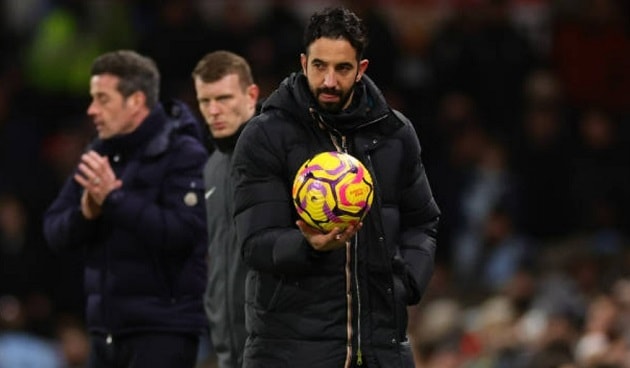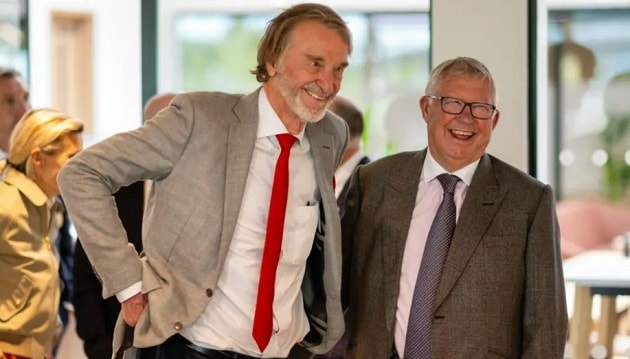Man Utd overhaul: 450 players leave, strong data guidance
Sir Jim Ratcliffe pushes ahead with Man Utd overhaul: £1.25bn for 27.7% stake, 450 staff leave, F1 data brought in, Ruben Amorim succeeds Erik ten Hag.
In less than two years since Sir Jim Ratcliffe invested £1.25 billion for a 27.7% stake, Manchester United have undergone a radical rebuild: 450 staff have left the club, the governance structure has been streamlined, the operating model has been transformed into a disciplined, data-driven one, and first-team power has changed hands from Erik ten Hag to Ruben Amorim. The short-term goal is European football, but the foundations have been laid for a return to the Premier League and Champions League.

Key milestones of the overhaul
- Investment: £1.25 billion for a 27.7% stake.
- Staff: 450 people left in less than two years; 19 new senior staff appeared.
- Finance: Loss of £113.2m to June 2024; deficit narrowing to £33m by 2025.
- Team: Erik ten Hag leaves, Ruben Amorim takes over; over £450m for squad, £50m upgrade Carrington.
- Data: Michael Sansoni from Mercedes F1 as Chief Data Officer; insider claims club is 'top 4 team in data'.
Systemic cleansing: unprecedented speed and extent
Ratcliffe acted quickly to avoid further instability. The 450 staff leaving was equivalent to a mid-sized company being pulled out of the system. The new board's view: Man Utd was bloated, cumbersome, inefficient and too dependent on Champions League revenue.
Along with the cuts comes reallocation: the apparatus is moving towards a lean model, with multi-tasking personnel, suitable for modern management. The two remaining old faces, Collette Roche and Martin Mosley, act as a bridge to maintain operational continuity with the previous period.
Financial discipline: from warning to balanced orbit
With a loss of £113.2m by June 2024, Ratcliffe warned Man Utd “could be bankrupt by Christmas” if they didn’t restructure immediately. The trajectory has since been pulled towards balance, with the deficit falling to £33m by 2025. Insiders believe the club will break even and return to profit, while the Glazer family remains involved in the management and hasn’t completely withdrawn from the decision-making process.
Power on the pitch: Amorim takes over, targeted investment

In the first team, Erik ten Hag left Old Trafford and Ruben Amorim was given the reins. More than £450 million was poured into the squad, while a £50 million upgrade to Carrington helped standardise training conditions. With the change in personnel came a change in standards: the sport’s structure was designed to cater for long-term performance, rather than short-term cycles.
Data Revolution: F1 DNA in the Football Brain
Ratcliffe has criticised Man Utd’s analytics as being “from the last century”. The appointment of Michael Sansoni from Mercedes F1 as chief data officer has been a key piece of the puzzle: the infrastructure for collecting, processing and applying data has been re-engineered to support scouting, tactics and coaching. One insider claims the club is now ‘in the top four in terms of data’ – a significant leap forward from years of being behind the curve.
Organization and administration: 19 new focal points, two historical threads
In a short time, 19 new senior personnel appeared, spanning positions: CFO, academy director, communications director, nutritionist, first-team doctor... The internal picture looked like a new organization, but still maintained the necessary continuity thanks to Collette Roche and Martin Mosley.
Typical obstacle: the Dan Ashworth case
Considered one of the most prestigious sporting directors in England, Dan Ashworth left Newcastle to join Man Utd but left just five months later. The club had to pay around £7 million in compensation to both sides. Although denying any involvement in the decision to choose a coach to replace Ten Hag, Man Utd admitted that the model that Ashworth wanted was not compatible with the new operating structure.
This season's goals and the long-term picture

This season, the target is realistic: qualifying for European competition. Under new leadership, that’s just the launchpad. The overhaul isn’t to stop at the top six, but to set the standard for competing for Premier League and Champions League titles every year. The final outcome will still be judged on the pitch, but from the boardroom to the training ground, Man Utd have moved vigorously – sometimes chaotically – but with purpose.


